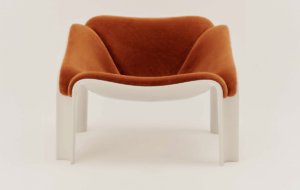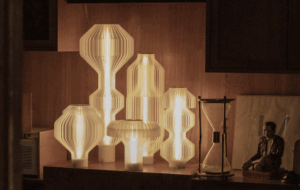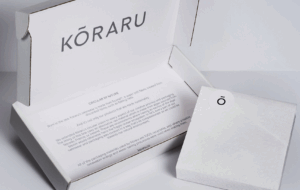
words icon team
Who are the people who are changing the contemporary design landscape? What are the products, organisations and ideas that everyone will be copying in the immediate future?
For our 21st issue, we asked ourselves these questions and this is what we came up with. We argued about it for ages and if we were to start again, we’d probably come up with an entirely different list.
And you’ll probably disagree with it completely. But isn’t that the point of list stories?
01
Ikea
If it wasn’t for Ikea, most people would have no access to affordable contemporary design. The company has done more to bring about an acceptance of domestic modernity (in the traditionally-minded UK market at least) than the rest of the design world combined.
Until recently, the Swedish multinational positioned itself as a youthful, modern alternative to the overstuffed florals and frilly duvet covers of your parents’ houses – a philosophy captured in its brilliant “Chuck out your chintz” ad campaign of the mid-Nineties.
But having successfully invalidated retro-suburban taste, Ikea has now turned its fire on expensive “designer” furniture – and on the pretensions of designers themselves. With its audacious new advertising campaign featuring spoof celebrity designer van den Puup and a made-up protest group called Elite Designers Against Ikea, the flat-pack giant is asking: why spend £3,000 on a celebrity-designed sofa when you can get an equally good one for £300?
It’s a good question, and elite brands are responding. Apple has just introduced $99 iPod shuffle and $499 Mac mini; and when even conceptual Dutch outfit Droog accepts the need to respond to the price-slashing might of Ikea (see interview on page 80), it’s time to acknowledge that founder Ingvar Kamprad is the most influential taste-maker in the world today.
02
Rapid prototyping
New manufacturing processes – such as bent tubular steel at the start of the 20th century and injection moulding in the 1960s – have always had a profound impact on designers and their output. But rapid prototyping is perhaps the most revolutionary fabrication technique since the invention of the potter’s wheel.
As its name suggests, rapid prototyping was developed as a way of producing prototypes for intricate components in the medical and automotive industries. A more accurate name for it is three-dimensional printing, as it builds up objects layer by layer, working in the same way as an inkjet printer but creating solid forms out of liquid or powdered polymers, rather than just two-dimensional patterns.
The advantages of the technique are that it does not require expensive tooling and any conceivable shape can be produced. Also, by tweaking the computer files, each object can be made to be unique, spelling the end of the concept of mass production.
Ron Arad was one of the first designers to experiment with rapid prototyping, using it to produce a series of lights four years ago, but it was Dutch duo Freedom of Creation (see icon 003) that came up with the first commercial RP products. Their range of lamps (one is shown here) and fabrics, caused a sensation in Milan in 2003. Last year, French designer Patrick Jouin produced the first full-size RP chairs and tables.
Belgian firm Materialise is the main driving force behind this creative revolution. Two years ago it set up an art department to encourage designers to explore RP’s potential for direct manufacturing.
Now the internet is buzzing with rumours that Hewlett Packard is developing a 3D printer based on its 2D inkjet range and aimed at the domestic market. This could revolutionise the production of objects just as desktop PCs transformed the publishing industry.
03
Easyjet
In New York for the International Contemporary Furniture Fair last year, we heard only one convincing reason for the lack of spark in the American design scene. EasyJet.
The proliferation of budget air carriers has transformed the map of Europe, and Americans are terribly jealous. It costs a London-based designer less than £50 to fly to Milan; in the US, even the cost of inter-city flights is prohibitive.
But it is not just at the transport centres that the effects are felt. The budget airlines have been instrumental in the rise of medium-sized European cities as creative hubs, and this looks set to continue. Barcelona, Antwerp, Stockholm and Rotterdam have all become genuine alternatives to the big metropolises for young designers, and now Porto, Helsinki and Ljubuljana are following in their footsteps. Live and work in these places, and you can commute to London, Milan or Paris at will.
EasyJet and its many competitors allow more people to get to the Milan Furniture Fair – there is now no excuse to miss it. In fact, at those prices, you can afford to take in Paris, Cologne and Stockholm as well.
Enjoy it while it lasts. The budget boom will come to be seen as a golden age of accessible travel, as the ecological cost of air transport is counted and regulated. In the meantime, Europe will revel in its compact diversity.
04
Milan
Production is increasingly shifting to the Far East, and cities like London, Paris and Singapore blather on about being capitals of creativity, but Milan remains the spiritual centre of the design universe. Milan Design Week, held each April and consisting of the Salone – the official furniture fair – and a huge number of fringe events, is still by some margin the world’s premier occasion for product launches and networking. Everyone – but everyone – goes to Milan, the one unmissable event in the calendar.
And Milan is still just about the only place in the world that has a critical mass of visionary design houses, skilled craft workshops and manufacturing capabilities, allowing it to be a one-stop shop for commissioning, prototyping and producing cutting-edge products.
It proves that in the age of digital communication and cheap Chinese labour, you still can’t beat the pleasure of working up a design on a napkin over a leisurely cappuccino with your client, before popping round the corner to discuss how it might be made with a master craftsman.
05
Design Academy Eindhoven
After a few years in the doldrums, the Dutch design scene is back as a major force – and Design Academy Eindhoven is the crucible of it all. Since Li Edelkoort took over as chairwoman in 1999, it has eclipsed the Royal College of Art in London as the school turning out the hottest young prospects.
In the last two years alone it has produced three graduates who are already on their way to major international success: Maarten Baas, whose Smoke series of burned furniture has received global attention (and who featured on the cover of our last issue); Bertjan Pot, whose Carbon Chair was snapped up by Marcel Wanders for Moooi and was one of the best new products of 2004; and Joris Laarman, whose concrete radiator is being manufactured by Droog and who is being talked up as the next big thing. Another recent graduate, Naomi Kaempfer is making waves as art director at rapid prototyping pioneer Materialise (see entry no 2).
The academy’s teaching staff is a roll-call of the Netherlands’ finest practitioners. Edelkoort herself is a hugely influential trends guru. Department head Hella Jongerius is widely considered the world’s leading female designer. Gijs Bakker and Remmy Ramakers of Droog teach there, as does Jurgen Bey.
Any of the above might easily have made it into this list in their own right. The fact that they are all directly involved in nurturing the next generation of designers – and in many cases giving them employment – makes Design Academy Eindhoven the most influential organisation at the heart of the world’s most influential national design culture.
06
Alice Rawsthorne
When we went to Tokyo in October, everyone was talking about the row at London’s Design Museum. The same was happening in New York. The row, of course, was between the museum’s director Alice Rawsthorn and vacuum cleaner magnate James Dyson, who resigned as chair of the trustees in disgust at Rawsthorn’s policies.
This global interest proves that Rawsthorn is either doing something very right, or very wrong. Either way, since she arrived in 2001, the Design Museum has become one of the most innovative and controversial institutions anywhere.
A voracious consumer of new ideas, Rawsthorn tirelessly travels the world hoovering up breaking talent to showcase in the museum, which she runs as her personal fiefdom. She controversially rejected retrospectives of Dieter Rams and Issey Miyake – instead doggedly pursuing the people and products that she thinks will be the greats of the future, such as Joris Laarman, the Bouroullec brothers and the Campana brothers.
The experimental Tank exhibition space and the annual Design Mart show, along with the Designer of the Year Award have provoked interest from beyond the world of design.
More than anything, the Dyson row (which began over his objections to her show on flower arranger Constance Spry) has caused a fundamental, and long overdue, reappraisal of what design actually is. It marks a break from the tired and technocratic view, to a more relevant one of design as a multifarious cultural and social phenomenon.
07
Copying
It’s getting easier and easier to rip off someone else’s ideas, and the implications for people who come up with them in the first place are profound.
Digital cameras and camera phones allow unscrupulous manufacturers to ping images of your latest products back to their technicians the minute you exhibit them. By the time the next trade show comes around, an inferior – but far cheaper – version of your design may well be on display in the next hall.
As well as overt (and illegal) copying, the concept of “sampling” the work of others is now firmly established as a valid creative approach that has migrated from the music and software industries into the realm of 3D design.
Concepts like “creative commons” – whereby others can copy your work as long as they acknowledge that you had the idea first – and “copyleft” – whereby anyone can pass on your ideas, as long as they themselves make no claims to ownership – are also gaining currency in the design world.
A whole industry of anti-copying pressure groups and lawyers has grown up to advise and protect designers. But the days may be over when eureka moments belong to an individual; perhaps it’s time to stop trying to preserve your one good idea from the copyists and have another one instead.
08
Bouroullec Brothers
Most designers simply iterate existing ideas; French duo Ronan and Erwan Bouroullec are among the few who consistently come up with new typologies.
Everything the brothers produce has a remarkable freshness to it: their Joyn desk system, produced for Vitra in 2002, brought the informality and flexibility of the family dining table to the workplace and has been widely copied.
One of their key themes is adaptability. Their most recent example is Algues, a product for Vitra consisting of small moulded plastic components that clip together to form curtains, room dividers, trellises or wall coverings. This simple but beautiful product allows users to customise their environment as circumstances change. Like many of their products, it is modular and flexible rather than final.
It puts the user in control, quietly inverting the “we know what’s best for you” approach of many designers. It is the latest example of the Bouroullecs’ uncanny ability to create products that others can’t help imitating. (Read our interview with the Bouroullecs.)
09
Blogs
Computers and the internet are changing the way designers work in myriad ways, but we’ve settled on blogs as the phenomenon that is having the greatest impact right now.
Blogs are a genuinely new method of spreading news, opinion and discussion. Formatted like diaries, they can be written by anyone with access to a computer and an internet connection, allowing them to publish their thoughts on a global scale as soon as they can type it.
They’re already making a big difference: sites such as dezain.net and reluct.com are posting reviews of new products and trade shows as they happen, giving global exposure to ideas that might never otherwise get seen, and at a speed with which traditional media cannot compete.
Bloggers are also challenging traditional sources of authoritative opinion, such as print journalists and TV pundits. Whereas, in the past, matters of taste were decided by an elite coterie of critics, blogging gives anyone with something to say access to a potentially huge audience.
This democratisation of the taste-making process marks a significant shift in the balance of design commentary. (Read our blogs feature.)
10
Midsummer Light
London-based Dutch designer Tord Boontje is one of the leading exponents of the return to decoration in design. But while others merely apply pattern to the surface of simple objects, Boontje has developed a way of integrating pattern and object.
And rather than employ derivative patterns cribbed from Arts and Crafts wallpaper or antique brocade, Boontje has evolved an aesthetic of his own that appears to be hand crafted but is in fact designed on a computer screen and mass-produced using simple stamping or acid-etching processes, thereby making beautiful, “crafty” objects extremely affordable.
His 2002 Wednesday light was a ground-breaking piece – an acid-etched sheet of brass that could be manipulated by the user into a filigree bulb surround.
His 2004 Midsummer light took the idea a step further, consisting of two flat-packed sheets of Tyvek (the high-strength paper used for DHL envelopes) stamped with delicate floral patterns that are literally draped over a bare light bulb. The utter simplicity of the idea and the ethereal beauty of the object make the Midsummer light one of the greatest pieces of design in recent years and one which has already heralded a flood of flower- and butterfly-encrusted imitations. (Read our interview with Boontje.)
11
Light Transmitting Concrete
LitTraCon could spell the end to the grass-roots distaste for exposed concrete. Once favoured by the brutalists, concrete is perceived as heavy and opaque – the oppressive fabric of inner-city estates. But LitTraCon plays with that identity by embedding glass fibre into the material, allowing light to pass through it. Walls become luminous and animated with shadows.
Though it is still under development by its inventor, a Hungarian architect called Áron Losonczi, LitTraCon already hints at the great range of applications it could have – lightening otherwise dark corners and adding movement and a sense of connection between inside and outside. It has the same load-bearing abilities as normal concrete but without the lumpen solidity. These applications are not just in architecture but product design as well – already, Losonczi has created the LTC Lamp to demonstrate its luminous potential.
LitTraCon is the most exciting example of a new generation of concretes – translucent, water-permeable, floating – that are changing people’s preconceptions of this ubiquitous yet often unloved material.
12
The readymade
Since 1917 when Marcel Duchamp exhibited a signed ceramic urinal, notions of the readymade have been part of cultural practice to the point where it has become banal even to mention it.
But the world of design is appropriating readymade objects as never before, and the evidence is clear from student work to products like Maarten Baas’s scorched furniture, Committee’s arbitrary and amusing kebab lamps (in which random objects are skewered), or Nadja Mueller and Sara Berner’s embroidered second-hand furniture.
It is, often, a democratising impulse. For example, the lack of cheap raw materials has led to several designers reconstructing pieces of Ikea furniture, such as the students at the Icelandic Academy of the Arts (featured in icon 020).
Behind this appropriation is not the shocking impulses of Duchamp – whose Fountain urinal was recently voted the most influential artwork of the 20th century – but a longing for design that has a relationship to the stuff of everyday life, reclaiming the individual’s will to customise in an increasingly homogenised culture.
13
South Korea
While China is the most ostentatiously emerging market in the east, there is another that has stolen a march in terms of its attitude to design. South Korea has the most extensive government-sponsored policy on the promotion of design in the world, and by 2007 the country is aiming to be “the world design leader in the digital era”, and to make the design industries a 20 trillion Won (£10bn) business, which is 3% of GDP.
The country’s corporations are leading the charge: electronics manufacturer Samsung won more awards at the US Industrial Design Excellence Awards in 2004 than anyone else; Hyundai and LG have also invested hundreds of millions in design research and are following closely behind.
The retail sector in South Korea has taken a leaf out of Tokyo’s book. With boutiques designed by the likes of UN Studio, Claudio Silvestrin and Barkow Leibinger appearing in Seoul, the city is developing into a style capital to rival any in the far east.
Meanwhile, design education is thriving. Along with huge government-sponsored efforts to improve design education, Dutch designer Richard Hutten has recently founded the Richard Hutten Design Academy in Seoul, which will be completed in 2008 in a building designed by Dutch architect MVRDV.
South Korea’s forward-looking attitude is also reflected in its infrastructure development. Subtly gearing up for reunification, it is running roads north towards the border, and investing money in projects such as Paju book village, a new publishing city which includes buildings by Steven Holl, Foreign Office Architects and SANAA as part of a masterplan by London-based Florian Beigel.
We’ll be counting the numbers of architects and designers working in Korea or for Korean companies in the next few years, and watching the Korean design scene grow.
14
Rei Kawakubo
While some say Rei Kawakubo is no longer the cutting edge of fashion design, she with her fashion label Comme des Garcons is one of the most savvy cultural figures around, blending the instincts of a svengali with an artistic vision of integrity. With an instinctive understanding of retail environments, she also understands how to hybridize clothes, furniture and architecture, working towards a trans-disciplinary position, finding new contexts and ways of mixing the ephemeral and the cultural.
Sixty-three-year-old Kawakubo is from Tokyo, and studied philosophy before starting Comme des Garcons in 1973. Her deconstructed clothes reimagined conventional silhouettes and treated clothing as a series of tectonic elements, despite the fact that Kawakubo, untrained in fashion, communicated only verbally with her designers and pattern-cutters.
However, Comme des Garcons has become much more than a fashion label. Future Systems’ designs for stores in Tokyo, New York and Paris set a new standard for event shopping. But while Prada and others went on to trump them with ever more monumental projects, Kawakubo stepped sideways, founding “guerilla” stores throughout Europe – temporary, found-space retail units in cities such as Ljubuljana, Berlin, Barcelona and Helsinki. The aesthetic is largely defined by the tastes of the independent franchise holders, giving the stores an uncontrived feel. They are part of a viral approach unique for such an established brand. It has already been (badly) copied by firms such as Kangol.
Kawakubo has moved from designer to curator, taste-maker and entrepreneur with her collaborations with super-chic Paris boutique Collette and iconic mod label Fred Perry, and the Dover Street Market store in London.
15
Ora Ito
French designer Ora Ïto isn’t here because of his design work. In fact, he hasn’t done an awful lot, though you have seen his aluminium beer bottle for Heineken and plastic water bottle for Ogo. No, it’s the story of how he rose to prominence that makes him influential.
Thrown out of Creapole design school in Paris within a few months, Ïto decided to produce bootleg designs for companies like Louis Vuitton, Apple, Nike and Bic, and publish them on his website as if they were realised.
The stunt gained a lot of interest from the press and from the companies themselves, and led to real commissions for real goods. These include a perfume bottle for Adidas, an interior design for a club and art direction for French band Air’s 10,000 Hz Legend album. Still only 28, he was the youngest designer ever to create furniture for Cappellini. He employs ten people.
Such “hacker” designs aren’t unique to Ïto – just look to the industrious groups of people designing fantasy Apple goods. But Ïto is the only example of someone that has successfully managed to build a design studio by skipping the traditional design education and career path.
16
Naoto Fukasawa
Naoto Fukasawa is changing the way we think about Japanese electronic products – and changing the way Japanese corporations think about them, too. With his wall-mounted CD player for Muji, Infobar mobile phone and collection for Plusminuszero (see page 38), he has brought a beautiful and playful simplicity to product types that are usually festooned with buttons and LEDs.
Fukasawa’s products for Plusminuszero were the hit of Tokyo Designers Block last year. His small design company is showing the institutionalised Japanese consumer electroniccs corporations that there are ways of differentiating between products with the same functions and prices. His designs are accessible and attractive, with an aesthetic that is free from the traditions of impenetrable technicality or patronising “user-friendliness”.
Fukasawa and Plusminuszero are setting an agenda from the sidelines that the big consumer electronic giants are bound to follow.
17
Entropy
Entropy, as anyone who read chapter seven of Stephen Hawking’s A Brief History of Time will know, is the scientific principle stating that all systems become increasingly chaotic with time. In other words, it describes nature’s abhorrence of uniformity.
In design, entropy can be used as an umbrella term to describe the increasing number of practitioners exploring ways of introducing chaos, decay and error into their work.
Swedish outfit Front allow hamsters to nibble their wallpaper and encourage boa constrictors to make indentations into their clay coat pegs. Joris Laarman is experimenting with moulds that quickly wear out, meaning the ceramic vases within them become increasingly degraded. Tom Dixon has produced coffee cups from natural fibre wear down with washing.
This trend can be seen as a deliberate reaction against the modernist pursuit of timelessness and perfection, and the absolute precision of digital design and mass production. Already, computer-based designers such as Future Factories are experimenting with digital entropy, developing algorithms that lead to a degree of unpredictability in the final (computer-manufactured) object.
18
Nintendo DS
Draw clouds onto the screen to catch the falling baby. Blow on the microphone to extinguish the candle. Nintendo’s new DS handheld console not only offers an entirely new way of playing videogames – it also represents a quantum leap forward in the way people interact with electronic devices.
It represents a move away from “abstract” interaction – where pressing a button causes a character on the screen to jump – to “embodied” interaction – where the gamer’s own physical actions are used to input instructions.
Tom Cruise’s character in the movie Minority Report used embodied interaction to operate his computer – and the DS brings this sci-fi technology to the real world. Embodied interaction has the potential to make all digital technology far more intuitive to use.
The DS features further innovations that challenge button-prodding interfaces. A touch-sensitive screen allows players to interact with games by drawing with a finger or stylus, and voice recognition software allows users to control games by speech.
The DS presents a fresh challenge for game designers to think beyond the traditional limits of videogame and, more generally, electronic interaction – it could bring a whole new dimension to programming the video.
19
Dunne & Raby
Product design is entering a “post optimal” phase, in which functional problems have largely been solved and designers instead are being called upon to invest objects with more abstract qualities that do not relate to their function.
Some designers, like Apple’s Jonathan Ive, are focusing on material tactility and formal purity, while others are rediscovering surface pattern.
London duo Tony Dunne and Fiona Raby, however, are pioneering a type of design that explores the social significance of objects. They argue that because things have layers of symbolic and ritual meaning on top of their function, product design can be a form of social commentary.
Their early work concentrated on electronic products, probing the impact of new technology on our lives. For instance, a table inlaid with compasses to register the electromagnetic fields from objects like mobile phones was supposed to prompt recognition of such invisible forces.
Their current main interest is biotechnology, and in particular exploring our responses to cloning, immortality, genetic modification and “designer babies”. Their students at the Royal Collerge of Art have proposed such products as a ring grown from the cloned bone of one’s lover or a tree implanted with their DNA. (See our interview with Dunne & Raby in the next issue.)
20
Murray Moss
New York’s Moss store in Soho is probably the most important design shop in the world. Part emporium, part gallery and part museum, it contains a constantly shifting selection of cutting-edge design classics and antiques.
It’s owner, Murray Moss, is a gifted and intuitive retailer who refreshingly doesn’t give a damn about fads or trends but has an unerring eye for the beautiful and a canny head for deal-making. Moss is a trustee of the Cooper-Hewitt, the National Design Museum and the Smithsonian Institution and has the ear of just about every key figure in the world of design.
He is the bridge between the vibrant European scene and the staid but huge American market, and often gives overseas designers (most recently Maarten Baas and Tord Boontje) their first big break.
Moss’ store is extremely highbrow yet can still laugh at itself. Despite the reverential atmosphere, the shop sells “do not touch” T-shirts, acknowledging the paradox of forbidding contact with furniture.
21
Yves Behar
Thirty-eight-year-old Yves Béhar is proving that you don’t need a Jonathan Ive-style aesthetic dictatorship to make beautiful objects for corporate giants.
Béhar looks like becoming the new designer of choice for many of the biggest global brands (his Fuseproject studio includes Nike, Microsoft and Toshiba as clients). He is one of the very few who can dip successfully in and out of their territory with integrity intact, and hints at a new willingness among major brands to expose their design strategy to outside influences. His bright red laptop for Toshiba (with an extendable hinged screen) is even lovelier than the iBook.

















